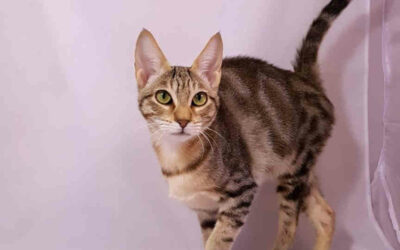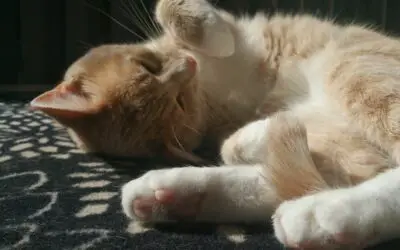The Persian cat is one of the oldest and most popular breeds of domestic cats. They are widely known as ‘Shirazi cats’ in the Middle East. Although the exact ancestry of the breed is unknown, it is believed that the Persian cat originated in Iran as a mutation of the local domestic cats, which are still seen in the wild today. Around 1620, the first known predecessors of the Persian were brought into Italy. With its long, soft coat and distinctive face shape, the Persian has become a favourite for many cat lovers, and it is not difficult to find expert cat breeders who specialise in breeding Persian cats.
Appearance
Persian cats are generally medium sized cats, with a broad chest and short legs. The typical weight for an adult male Persian cat ranges from 8 to 12 pounds, while females can range from 6 to 10 pounds. They have round faces with round eyes and short noses. The facial features are often described as ‘sweet-faced’ or ‘doll-like’. This breed also has wide ears set low on the head that accentuate their gentle yet alert expression.
Coat
A Persian cat’s coat can range from short to very long and can be straight or slightly wavy. It has a thick undercoat, giving it an even fluffier appearance. The fur on their face is usually shorter than the rest of the body and forms into a lion-like mane around the neck area. The tail is also full and fluffy with a plume at the tip.
Persian Cats have extra fur around their faces, creating the signature ‘pom-pom’ look around their nose and mouth area. This breed’s coat requires daily grooming to keep it looking soft and healthy.
Eyes
The Persian cat’s eyes are one of its most distinctive features. They are large, round, and expressive with a sweet almond shape. The eyes are typically set wide apart on the head and have an almost oriental slant to them.
The eyes can come in many colours ranging from golden yellow to deep green to hazel and even blue. Around the edges of these beautiful eyes you will find long and luxurious eyelashes that accentuate their beauty even further. The pupils of the Persian cat’s eyes tend to be very large and round, giving them an alert yet loving expression.
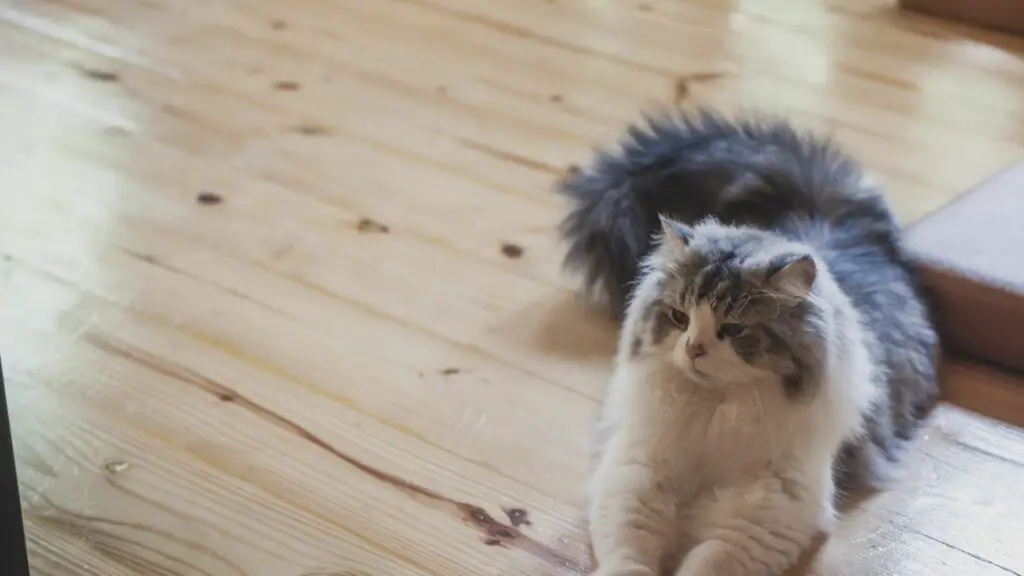
Personality & Behavior
This breed is known for its gentle, sweet temperament. They are often described as having an ‘endearing’ personality, and they tend to be quite affectionate and loyal to their owners. They are usually very patient cats, and they love to be petted and groomed. They are typically quite calm, with low energy levels and a gentle disposition.
Persians have a tendency to be quite shy around strangers, preferring the company of those they know well. They can be slow to warm up but once they do, they are incredibly loving towards their owners and family members.
Persians tend to form strong bonds with their people, often following them around the house and asking for attention when it’s offered. They make excellent lap cats, as they love snuggling up with their owners whenever possible.
Persian cats also tend to be very intelligent creatures who enjoy playing games that require mental stimulation such as puzzles or food mazes. They can even learn tricks, given enough patience and encouragement from their owners.
Overall, Persians make wonderful pets due to their affectionate nature and low energy levels. While some may take a bit longer than others to come out of their shells, once you gain their trust you will have a loyal companion for life.
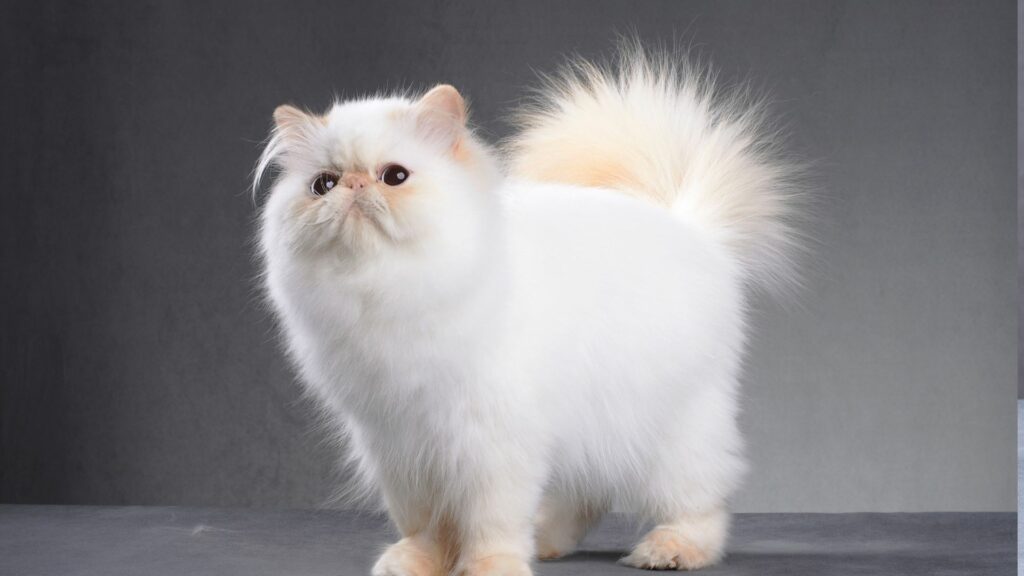
Children & Other pets
Persian cats have a sweet disposition and they don’t mind being handled by kids or even given a friendly hug. They tend to be quiet cats that rarely vocalise unless they sense danger or feel threatened.
When it comes to getting along with other animals, Persian cats do well with some dog breeds as long as the dog is not overly aggressive or territorial. If properly introduced, most Persians can become fast friends with other pets.
Grooming
Their full, long fur can easily become matted and tangled if not groomed regularly, so daily brushing is highly recommended for Persian cats.
It is important to use a soft-bristled brush that won’t irritate their sensitive skin and pull at their hair. It is best to start at the neck or back of the head and work your way down the body in gentle strokes, taking care to remove any mats or knots as you go. After brushing, use a metal comb to gently smooth out any remaining tangles before applying a leave-in conditioner for extra shine and nourishment.
Bathing should be done every 2 to 4 weeks with a shampoo made specifically for cats. You may choose to have your Persian professionally groomed if they are particularly difficult to bathe yourself. Nails should also be trimmed regularly (once per month) using nail clippers designed specifically for cats, as well as their ears cleaned with an ear cleaning solution. Learning how to brush your cat’s teeth can be daunting, but is worth it to help prevent tooth decay and gum problems.
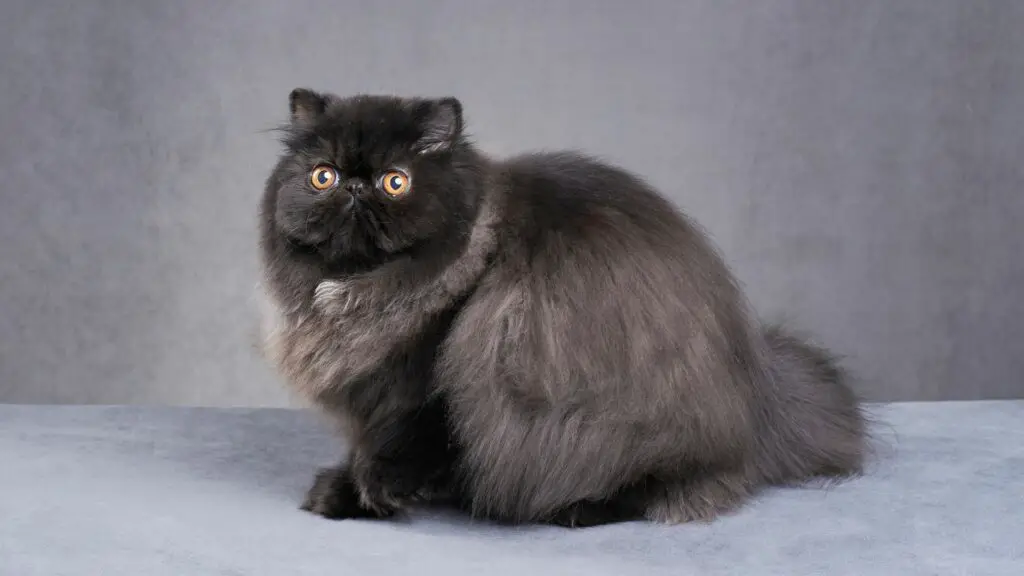
Pros & Cons
Pros
Persian cats are known to be very loyal and affectionate, making them excellent companions. They bond closely with their owners, often following them around the house and cuddling up next to them at night.
They are also relatively low-maintenance pets compared to other breeds due to their low energy levels and calm demeanour. Persian cats tend to be very quiet and rarely vocalise, so they make great pets for people who live in apartments or don’t want a noisy pet in the house.
Cons
Persian cats do require some extra care due to their long coats which means more frequent grooming sessions, and they tend to shed quite a bit which can create messes throughout the house if not properly managed or brushed regularly. Due to their flat (brachycephalic) faces, they can develop breathing problems which may need to be treated with medication or surgery.
In Short
Overall, owning a Persian cat is an incredibly rewarding experience that will bring any cat lover lots of joy into their life. Once you get used to their routines and needs, they make excellent companions for almost any kind of family.
Special Considerations
The Persian is considered to be a relatively healthy breed, but they do tend to suffer from some inherited disorders. These include:
- Brachycephalic Syndrome, a genetic condition that affects the skull shape of cats with flat faces such as Persians. It causes them to have difficulty breathing and can lead to serious respiratory issues if left untreated. Signs of this condition include snoring, noisy breathing, and frequent panting. Treatment often involves surgery to open up the airways and improve breathing.
- Polycystic Kidney Disease (PKD), a genetic disorder that results in multiple cysts on the kidneys which can be life-threatening if left untreated. Treatment usually involves managing symptoms with medication.
- Progressive Retinal Atrophy (PRA), which is an inherited eye disease that causes gradual degeneration of the retina leading to vision loss over time. Unfortunately there is no cure for this condition, but it can be managed with medications to help protect the remaining retinal cells from further damage


